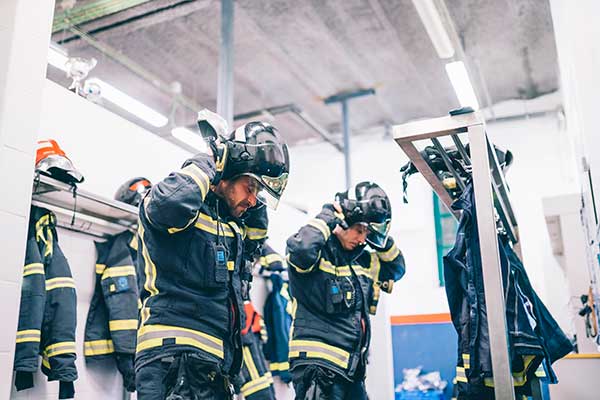One of the most crucial and determining factors of whether a 9-1-1 emergency escalates or gets resolved is response time. Faster help also means enhanced situational awareness and less guesswork for emergency responders. As we make groundbreaking advancements to our 9-1-1 systems with Next Generation 9-1-1 deployments around the country, we’re not only expanding capabilities but also significantly reducing response times. Within the NG9-1-1 system, various advanced and innovative elements are integrated and contribute to saving time and revolutionizing how our emergency response system works. In this blog, we’ll explore the different components and processes within Next Generation 9-1-1 time-saving.

One of the most urgent needs of a first responder is finding the caller. Enhanced location accuracy means the right team is dispatched, and faster. And while the majority of 9-1-1 calls are made by cell phones, they currently do not have the technology to pinpoint the caller’s exact location. In comes technologies such as Advanced Mobile Location (AML) for mobile devices, which can transmit a caller’s location data using GPS, Wi-Fi, or other available technologies. These technologies shave minutes off of data transmission and pinpointing the caller’s location.
Next Generation 9-1-1 efficiently routes emergency calls to the appropriate Public Safety Answering Point (PSAP) because of advanced Geographic Information System (GIS) technology. This foundational element supports accurate location validation, which then provides instantaneous call routing to the right PSAP. This minimizes call transfer times, ensuring immediate access to the appropriate local emergency services.

One of the highlighted differences between legacy 9-1-1 networks and Next Generation 9-1-1 is the ability for callers to communicate with a 9-1-1 call center in various ways. Where legacy networks accept phone calls, the IP-based Next Gen technology has the ability to accept voice calls, SMS, images, and videos. Text messages specifically are a huge time and potential life saver when contacting 9-1-1.
Next Generation 9-1-1’s ability to transmit multimedia data provides responders with vital visual context before arriving at the scene. This immediate access to images, videos aids in understanding the severity of the situation, leading to quicker and more informed decisions.
This gives PSAPS and other emergency service organizations the ability to seamlessly share data, coordinate, and communicate. This exchange of critical information streamlines coordination, leading to quicker and more efficient responses, especially in multi-agency emergency scenarios.
Where legacy 9-1-1 networks have remained stagnant for years, Next Generation 9-1-1’s design is flexible and allows for future integration of emerging technologies. This scalability ensures that the system remains adaptable to advancements, continuously improving response times.

We have all heard about 9-1-1 going down in large-scale emergencies. That is not the case with Next Generation 9-1-1. It has built-in redundancy and failover mechanisms to ensure system availability. This resilience minimizes downtime during times such as a natural disaster, an unusual call volume, and more, guaranteeing continuous emergency response capabilities.
The integration of advanced, multifaceted technologies and streamlined processes within Next Generation 9-1-1 saves crucial time, and the significant improvement to the overall effectiveness of emergency responses saves lives.
As NG9-1-1 continues to evolve and adapt to technological advancements, its time-saving elements will play an increasingly pivotal role in ensuring swift, accurate, and life-saving responses to emergencies.
Stay tuned in 2024 for ongoing advancements in Next Gen technology from Synergem and the entire emergency services industry. If you’re ready to learn more, contact our expert team today.